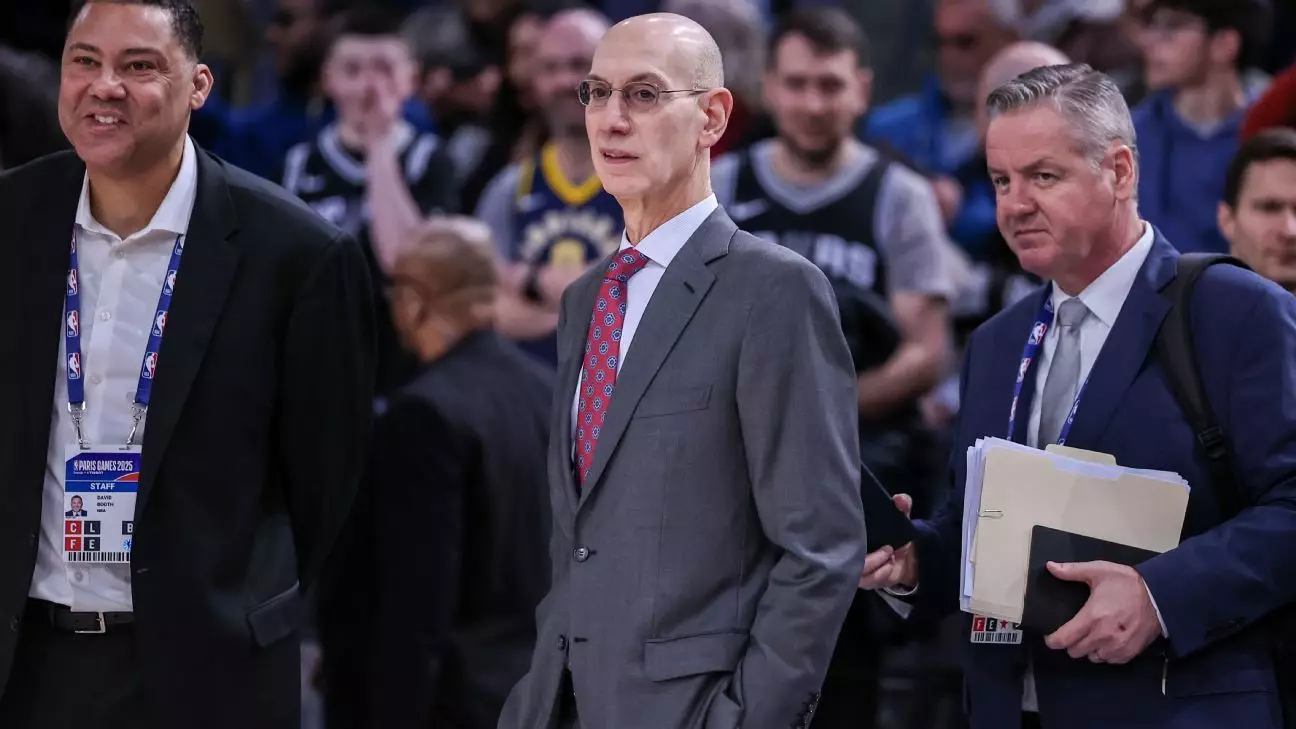In a recent interview, NBA Commissioner Adam Silver expressed a provocative and potentially transformative idea – the consideration of shortening NBA games from their traditional 48 minutes to a leaner 40 minutes, with each quarter reduced from 12 minutes to 10. This suggestion, while intriguing, opens up a slew of critical discussions surrounding the essence of basketball as we know it, the impact on game dynamics, and the broader implications for the league, its players, and its fans.
Silver, who made his remarks during an appearance on “The Dan Patrick Show,” argued for a reevaluation of the NBA’s game structure, especially as the league becomes more involved with an international audience that is accustomed to different formats. He highlighted that the NBA is unique in its adherence to a 48-minute game, a standard that remains unchanged in the league’s long history spanning 78 years. The commissioner advocated for a two-hour game format that aligns better with contemporary television viewing habits, suggesting that shorter games could enhance viewer engagement and viewership logistics.
The underlying rationale for such a shift is largely driven by the viewing experience. As Silver noted, an average NBA game lasts approximately 2 hours and 16 minutes, a figure consistent with the past 15 seasons. However, in an era dominated by streaming and on-demand content, where attention spans are shrinking, aligning the game duration with that of other sporting events such as college and Olympic basketball—which both operate on a 40-minute format—might cater to a more modern audience.
Yet, while shortening game time could appeal to casual viewers, it begs the question: at what cost? The historical significance of the game and its inherent rhythm and pace are deeply woven into the fabric of basketball. Record books, player statistics, and the very strategy teams employ are built around this established structure. Altering it could not only disrupt these core elements but could also lead to a disassociation from the sport’s rich heritage.
The reaction to Silver’s proposal has been mixed, particularly among coaches who uphold traditional values of the game. Notable voices like New York Knicks coach Tom Thibodeau and Denver Nuggets coach Michael Malone have openly critiqued the idea. Thibodeau emphasized that shortening games obstructs the pursuit of league records and diminishes the challenge that has historically defined basketball excellence.
Malone echoed this sentiment, acknowledging that while the NBA must adapt to maintain fan engagement, there is a fine line to tread between modernization and compromising the game’s integrity. His metaphor of avoiding a “Barnum & Bailey” spectacle underscores the potential risk of turning basketball into a mere entertainment product rather than a beloved sporting tradition.
Furthermore, the implications of shorter games extend beyond the immediate structure of play. With a potential increase in minutes played by star athletes, the dynamics of team rosters would inevitably shift. Players who typically constitute bench depth could find their roles diminished, impacting their career longevity and financial opportunities.
The conversation around game length also brings to light the broader struggle within professional sports to balance tradition with commercial viability. The advent of television contracts, streaming services, and the need to captivate younger audiences places leagues in precarious positions where they must constantly evaluate their legacy against evolving consumer preferences.
As the NBA navigates these waters, it’s essential that any changes consider the sport’s heart and history. Traditions such as the 48-minute game format have fostered memorable moments and legendary performances. Thus, while flexibility and innovation are vital for growth, preserving the elements that constitute basketball’s core allure should remain paramount.
Adam Silver’s proposition to shorten NBA games sparks necessary dialogue on balancing modernization in a rapidly changing entertainment landscape with a deep respect for the game’s legacy. As we reflect on these shifts, the challenge lies in ensuring that the essence of basketball remains untouched, even as it adapts to meet the demands of a new era.


Leave a Reply